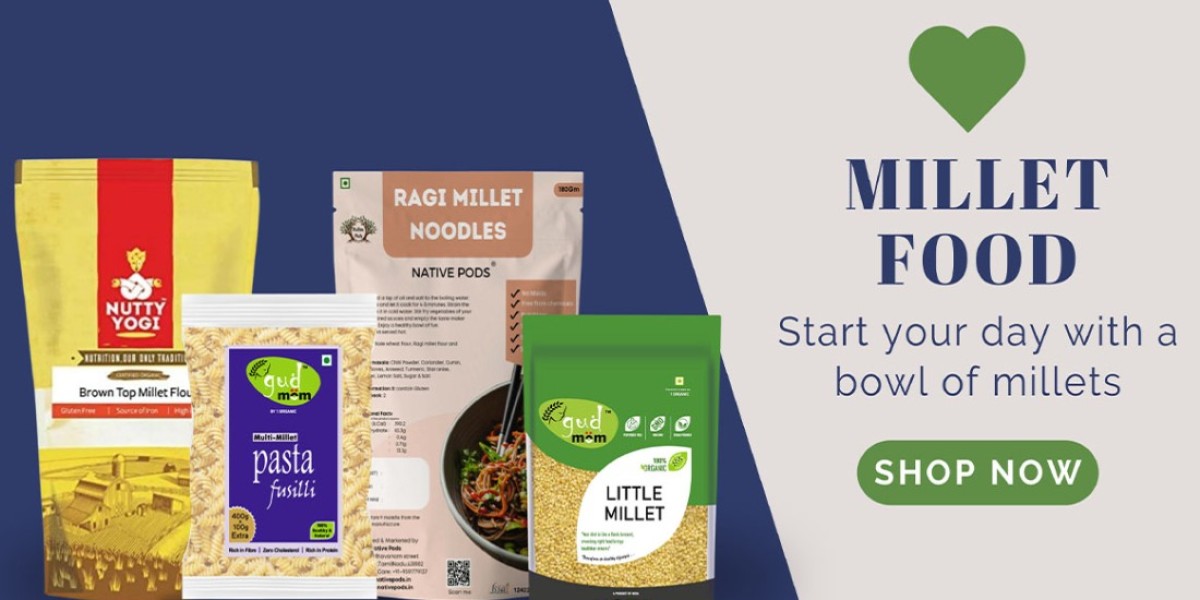Introduction
In recent years, there has been a notable shift in dietary preferences, with ancient grains like millets making a significant comeback. As people become more health-conscious and environmentally aware, these tiny, nutrient-rich grains are gaining recognition for their impressive health benefits and sustainable cultivation practices. This article explores the rise of millets, their benefits, and how they are revolutionizing modern diets.
## What Are Millets?
Millets are a group of small-seeded grasses that have been cultivated for thousands of years. They are among the oldest cultivated crops, with origins tracing back to ancient civilizations in Africa and Asia. There are several varieties of millets, including pearl millet, finger millet, foxtail millet, and proso millet, each with its unique nutritional profile and culinary uses. Despite their long history, millets were largely overshadowed by other staple grains like rice and wheat until recently.
## Nutritional Benefits of Millets
Millets are packed with essential nutrients that make them a valuable addition to any diet. They are particularly rich in:
### Protein and Amino Acids
Millets contain higher levels of protein compared to other cereals like rice and maize. They are also rich in essential amino acids, which are crucial for various bodily functions, including muscle repair and immune support.
### Fiber
One of the standout features of millets is their high fiber content. Dietary fiber is essential for digestive health, helping to prevent constipation and other digestive disorders. It also plays a role in regulating blood sugar levels, making millets a good option for individuals with diabetes.
### Vitamins and Minerals
Millets are an excellent source of essential vitamins and minerals, including iron, magnesium, phosphorus, and B vitamins. These nutrients are vital for maintaining energy levels, bone health, and overall well-being.
### Antioxidants
Millets are rich in antioxidants, which help combat oxidative stress and reduce inflammation. This can lower the risk of chronic diseases such as heart disease and cancer.
## Health Benefits of Millets
Incorporating millets into the diet offers numerous health benefits, which contribute to their growing popularity in modern diets.
### Weight Management
Due to their high fiber content and low glycemic index, millets help promote satiety and prevent overeating. This makes them an excellent choice for weight management. The slow digestion of millets ensures a steady release of energy, preventing sudden spikes and drops in blood sugar levels.
### Diabetes Management
Millets have a low glycemic index, meaning they cause a slower rise in blood glucose levels compared to refined grains. This property makes them beneficial for individuals with diabetes, as they help in maintaining stable blood sugar levels and reducing insulin resistance.
### Heart Health
The high fiber content in millets helps lower cholesterol levels by promoting the excretion of bile acids. Additionally, the presence of magnesium and potassium in millets aids in maintaining healthy blood pressure levels, further contributing to heart health.
### Digestive Health
Millets are easy to digest and are often recommended for individuals with digestive disorders. The high fiber content promotes regular bowel movements and helps prevent constipation. Millets also contain prebiotics, which support the growth of beneficial gut bacteria.
### Gluten-Free Alternative
For individuals with celiac disease or gluten sensitivity, millets offer a nutritious, gluten-free alternative to wheat and other gluten-containing grains. They can be used in a variety of recipes, from bread and pancakes to porridge and salads.
## Environmental Benefits of Millets
Beyond their health benefits, millets are also celebrated for their environmental sustainability. They require less water and fewer inputs than other staple crops, making them a more sustainable choice for agriculture.
### Drought Resistance
Millets are highly drought-resistant and can thrive in arid and semi-arid regions where other crops fail. This makes them a crucial crop for food security in areas prone to drought and erratic rainfall patterns.
### Low Input Requirements
Millets require minimal chemical inputs such as fertilizers and pesticides. This reduces the environmental impact of their cultivation and supports the health of agricultural ecosystems.
### Biodiversity
Cultivating millets promotes agricultural biodiversity. By integrating a variety of millet species into farming systems, farmers can enhance soil health and resilience to pests and diseases.
## Millets in Modern Diets
The resurgence of millets in modern diets can be attributed to their impressive nutritional profile and environmental benefits. As more people seek out whole foods and sustainable eating practices, millets are becoming a popular choice in kitchens worldwide.
### Culinary Versatility
Millets are incredibly versatile and can be used in a wide range of dishes. They can be cooked as a grain, ground into flour, or popped like popcorn. This versatility makes them suitable for breakfast cereals, bread, soups, salads, and even desserts. Traditional recipes from various cultures are being rediscovered and adapted to modern tastes, bringing millets back into the culinary spotlight.
### Plant-Based Diets
With the rise of plant-based diets, millets provide an excellent source of plant-based protein and essential nutrients. They can be used as a meat substitute in various dishes, providing a nutritious alternative for vegetarians and vegans.
### Gluten-Free Baking
Millet flour is gaining popularity in gluten-free baking. It can be used alone or blended with other gluten-free flours to make bread, pancakes, muffins, and other baked goods. Its mild flavor and light texture make it a favorite among gluten-free bakers.
### Ready-to-Eat Products
The demand for convenience foods has led to the development of ready-to-eat millet products, such as millet-based snacks, breakfast cereals, and instant meals. These products offer a quick and easy way to incorporate millets into the diet without compromising on nutrition.
## Challenges and Future Prospects
Despite their numerous benefits, the widespread adoption of millets faces certain challenges.
### Awareness and Accessibility
One of the primary challenges is the lack of awareness about millets and their benefits. Many people are unfamiliar with these grains and how to incorporate them into their diets. Increasing education and awareness through campaigns and culinary demonstrations can help address this issue.
### Supply Chain and Market Demand
The supply chain for millets is not as developed as that for more mainstream grains like rice and wheat. Improving infrastructure, market linkages, and support for millet farmers can help enhance the availability and affordability of millets.
### Research and Development
Continued research and development are needed to improve millet varieties, enhance their nutritional profile, and develop innovative products. Investing in research can also help address agronomic challenges and improve yields.
### Policy Support
Government policies and initiatives play a crucial role in promoting millet cultivation and consumption. Policies that support millet farmers, provide incentives for sustainable agriculture, and integrate millets into public food programs can drive their adoption on a larger scale.
## Conclusion
The millet revolution is gaining momentum as these ancient grains find their way back into modern diets. With their exceptional nutritional benefits, environmental sustainability, and culinary versatility, millets offer a promising solution to many of the health and environmental challenges we face today. By embracing millets, we can pave the way for healthier, more sustainable eating practices and ensure a more resilient food system for future generations.



